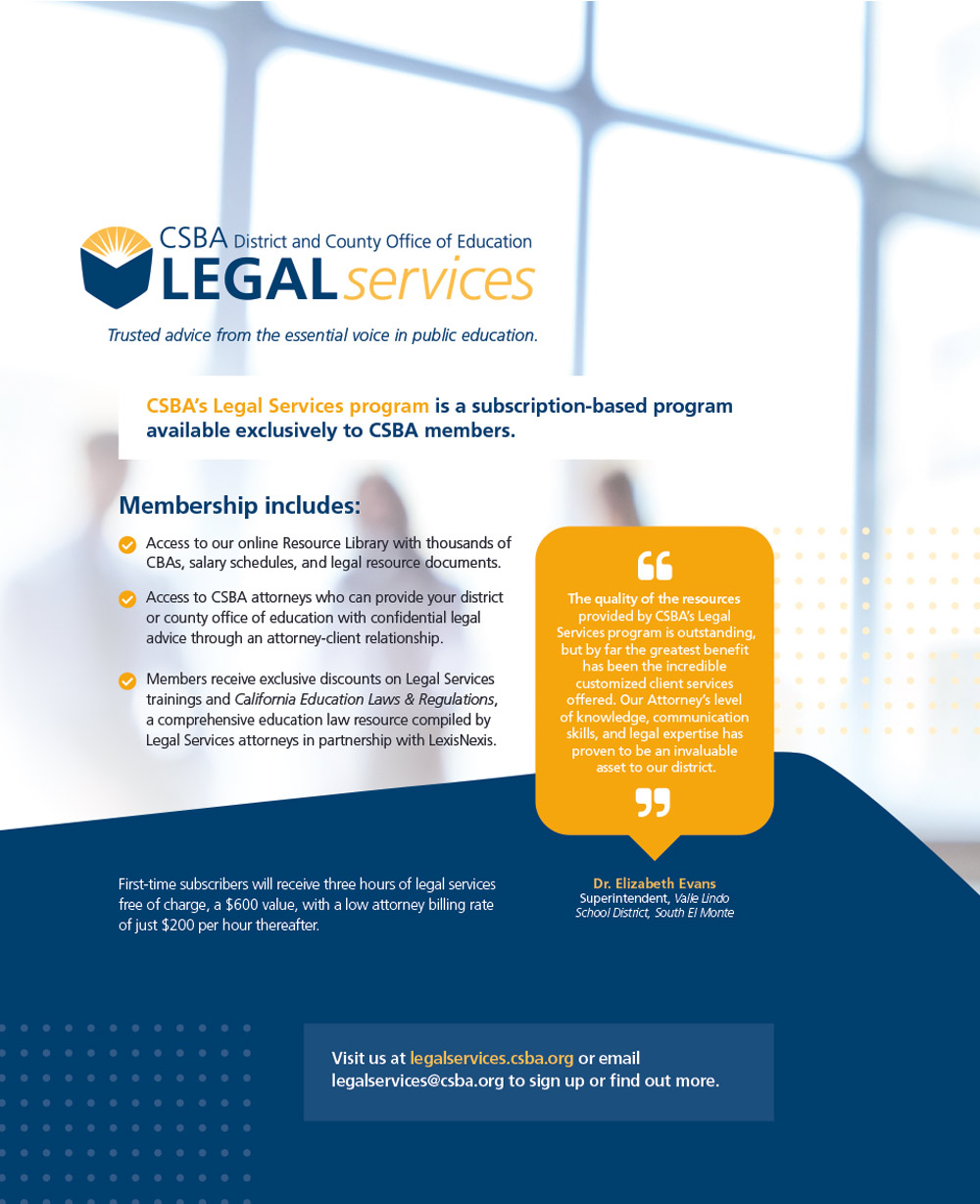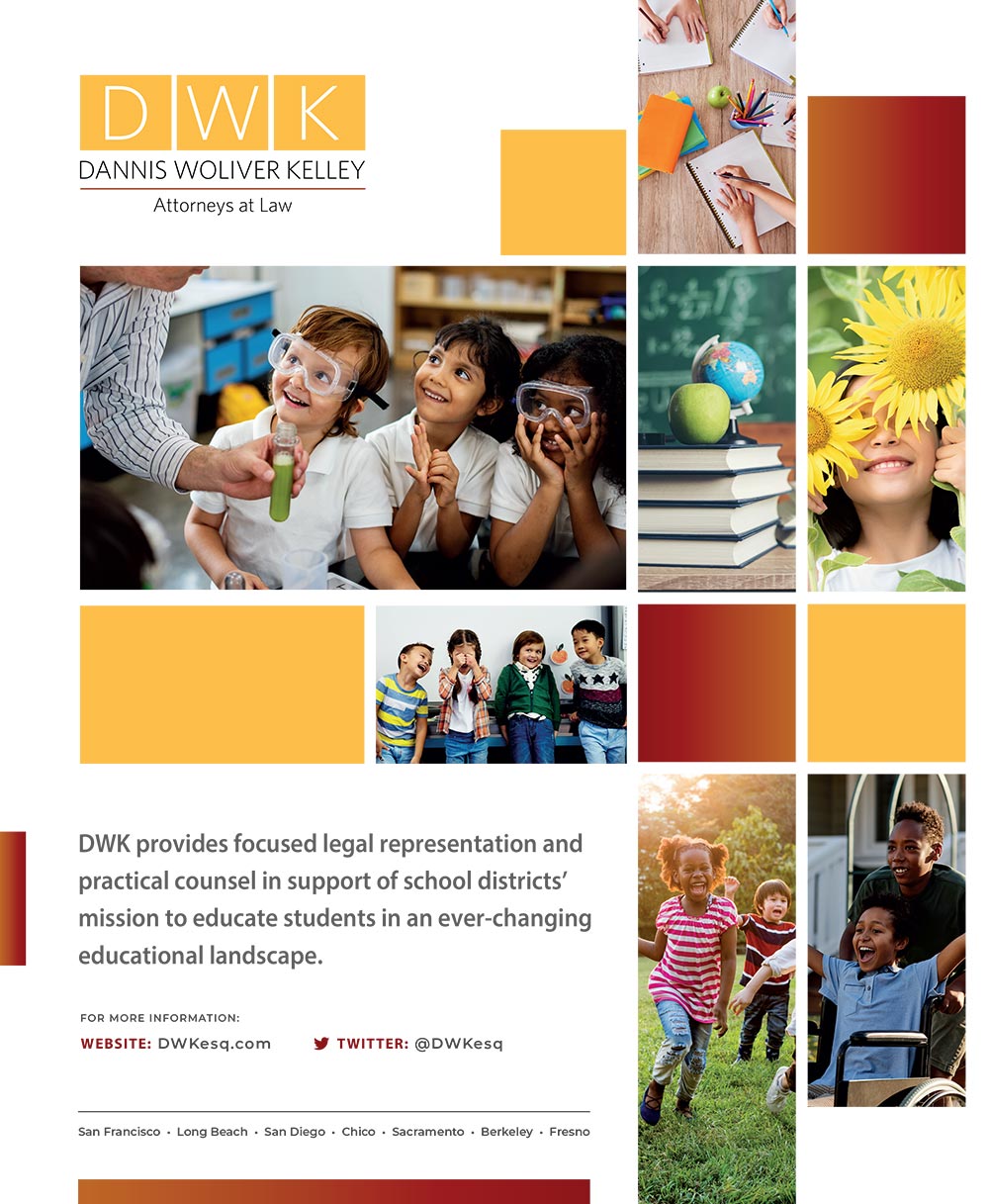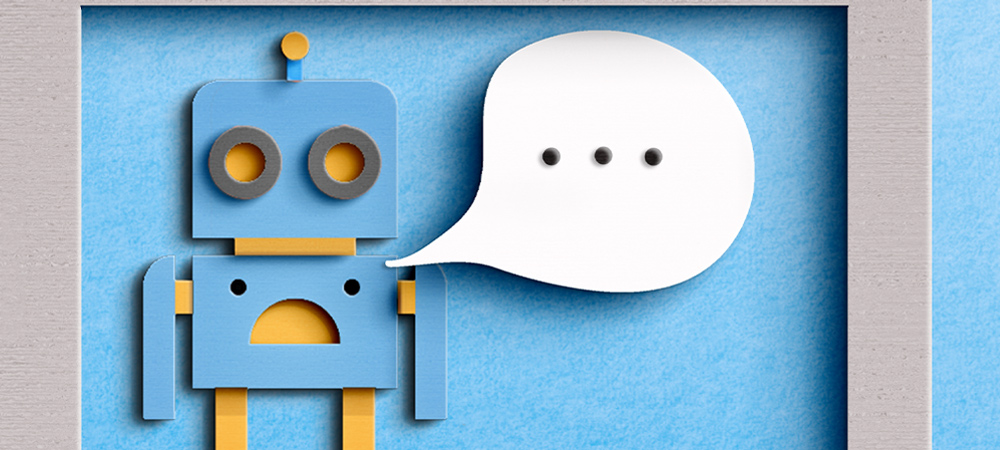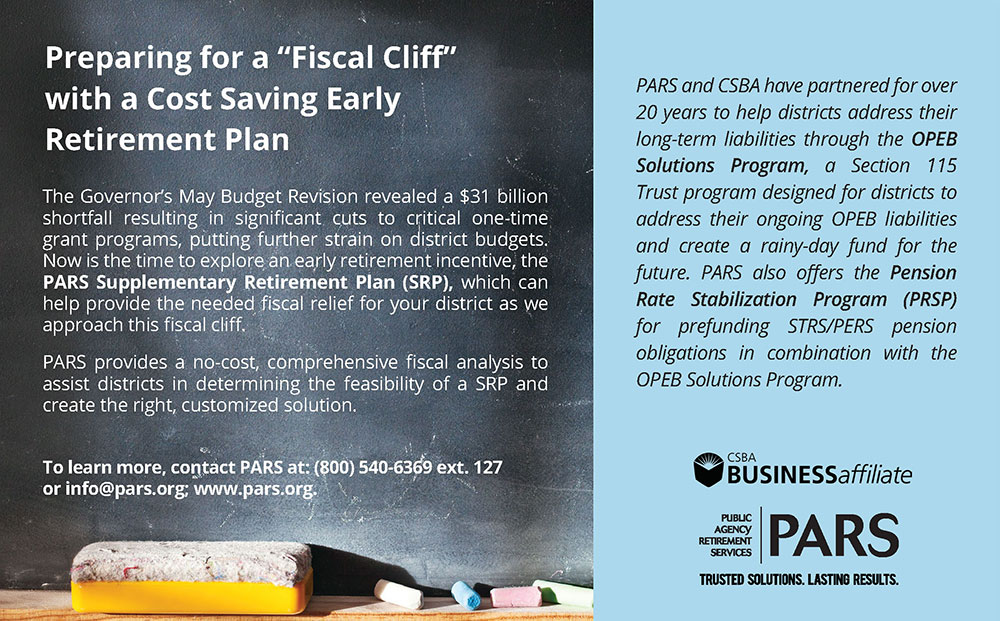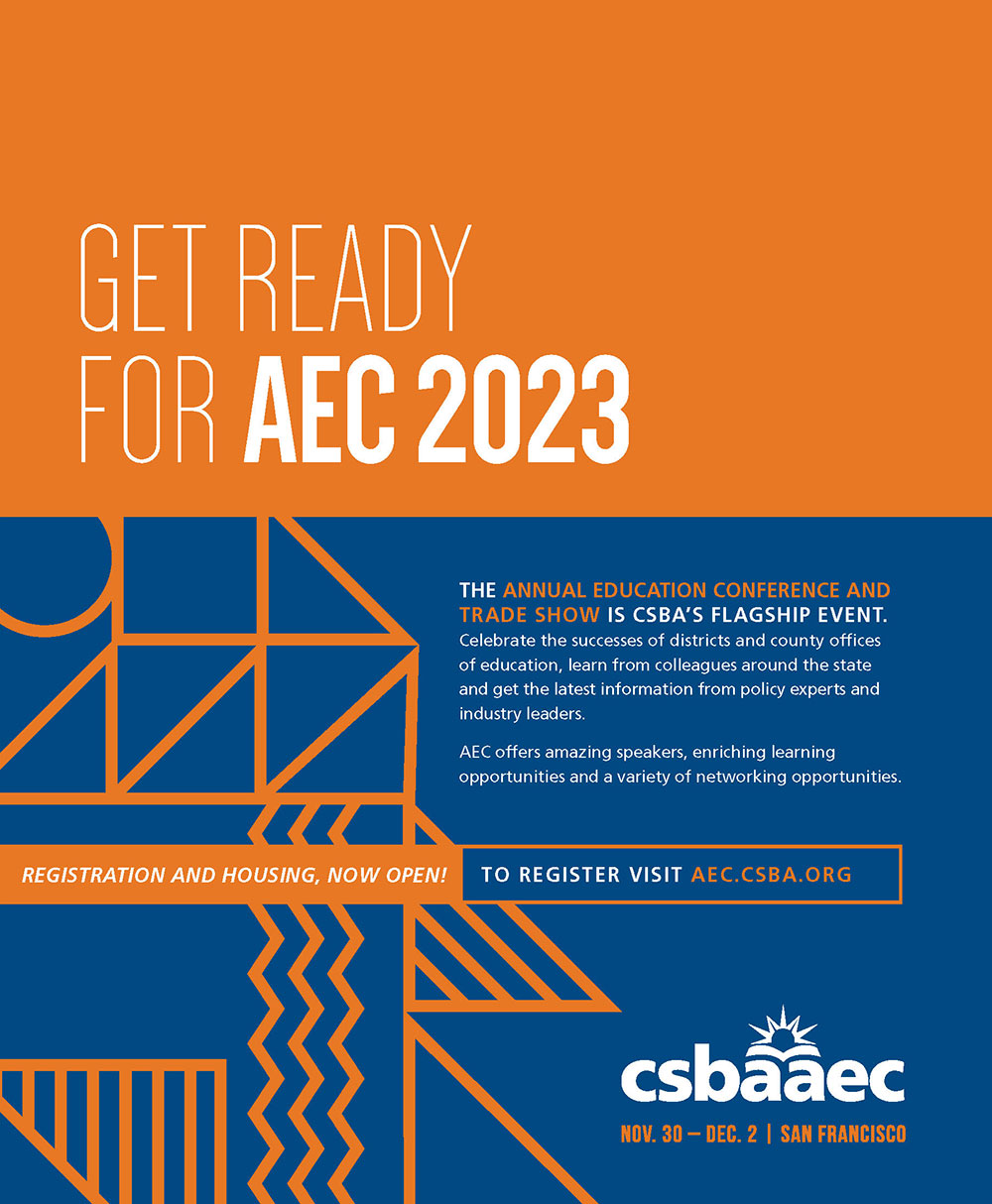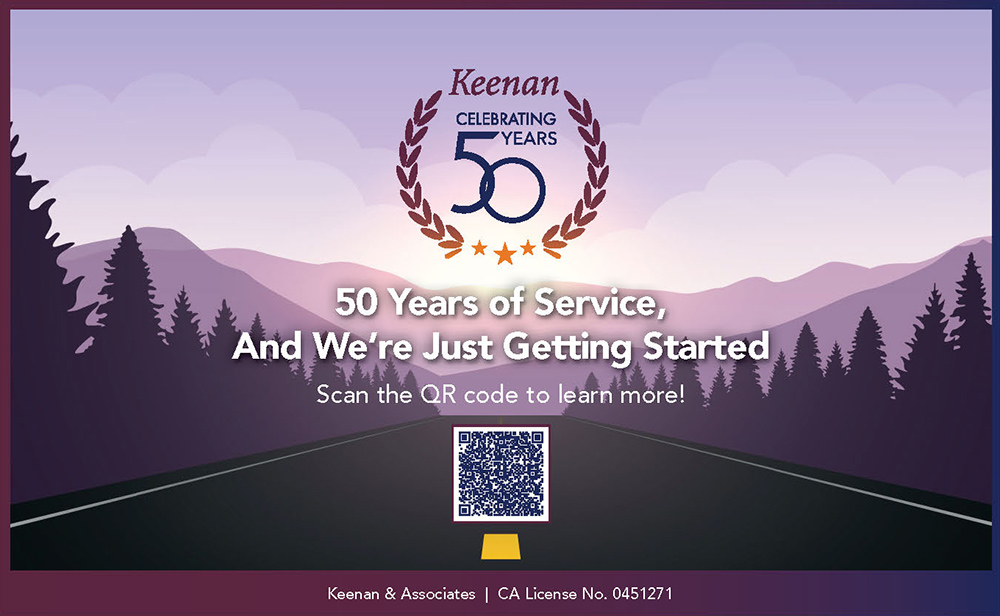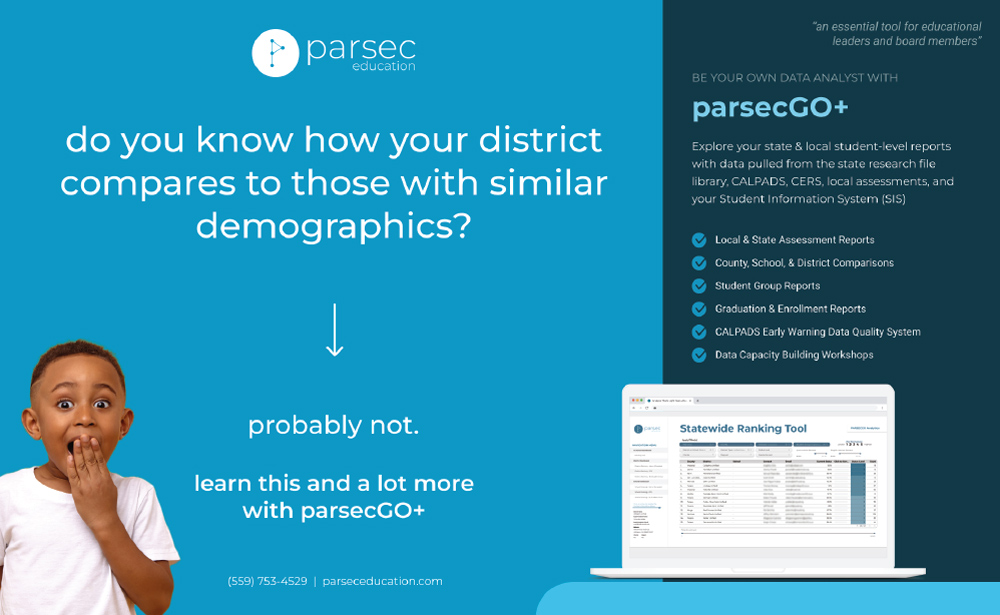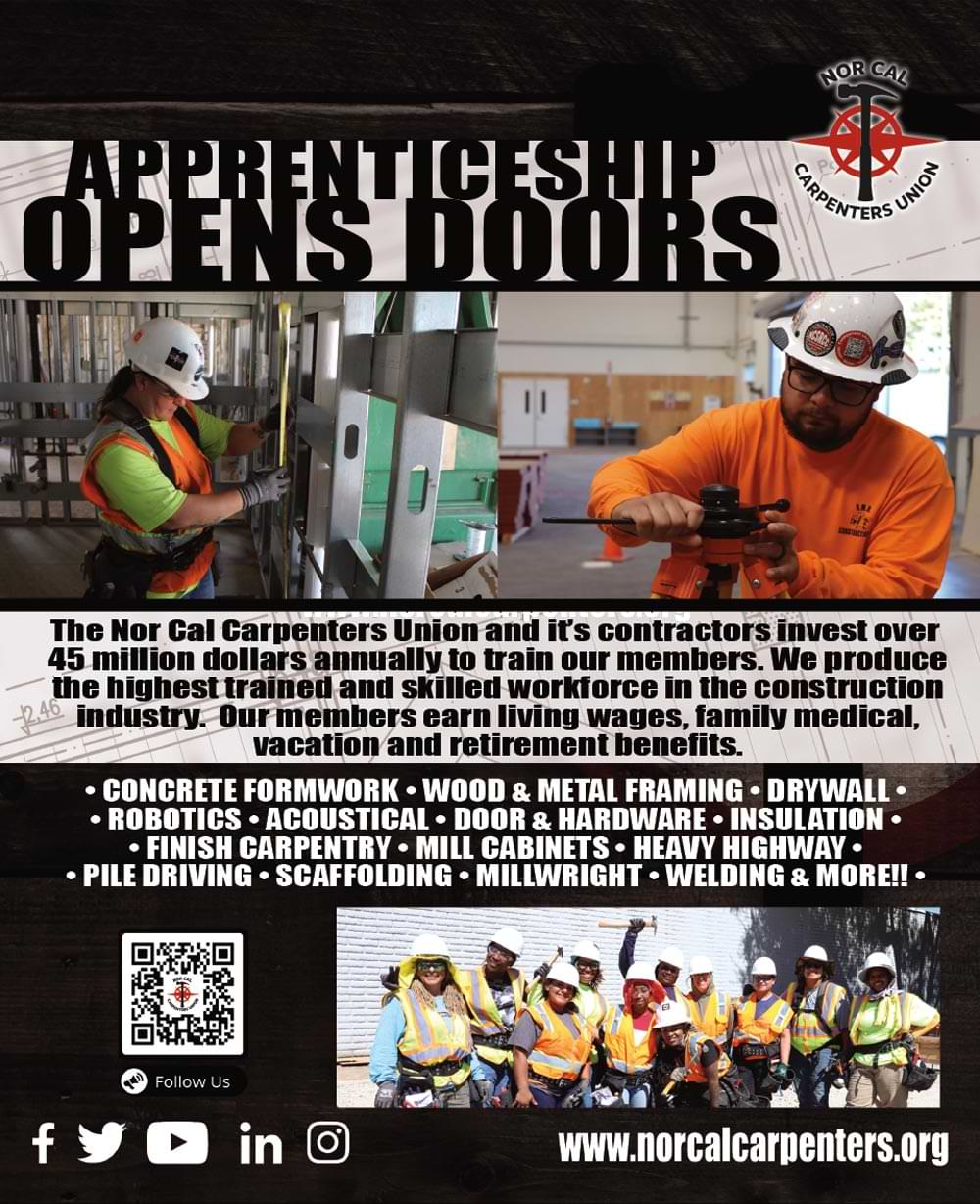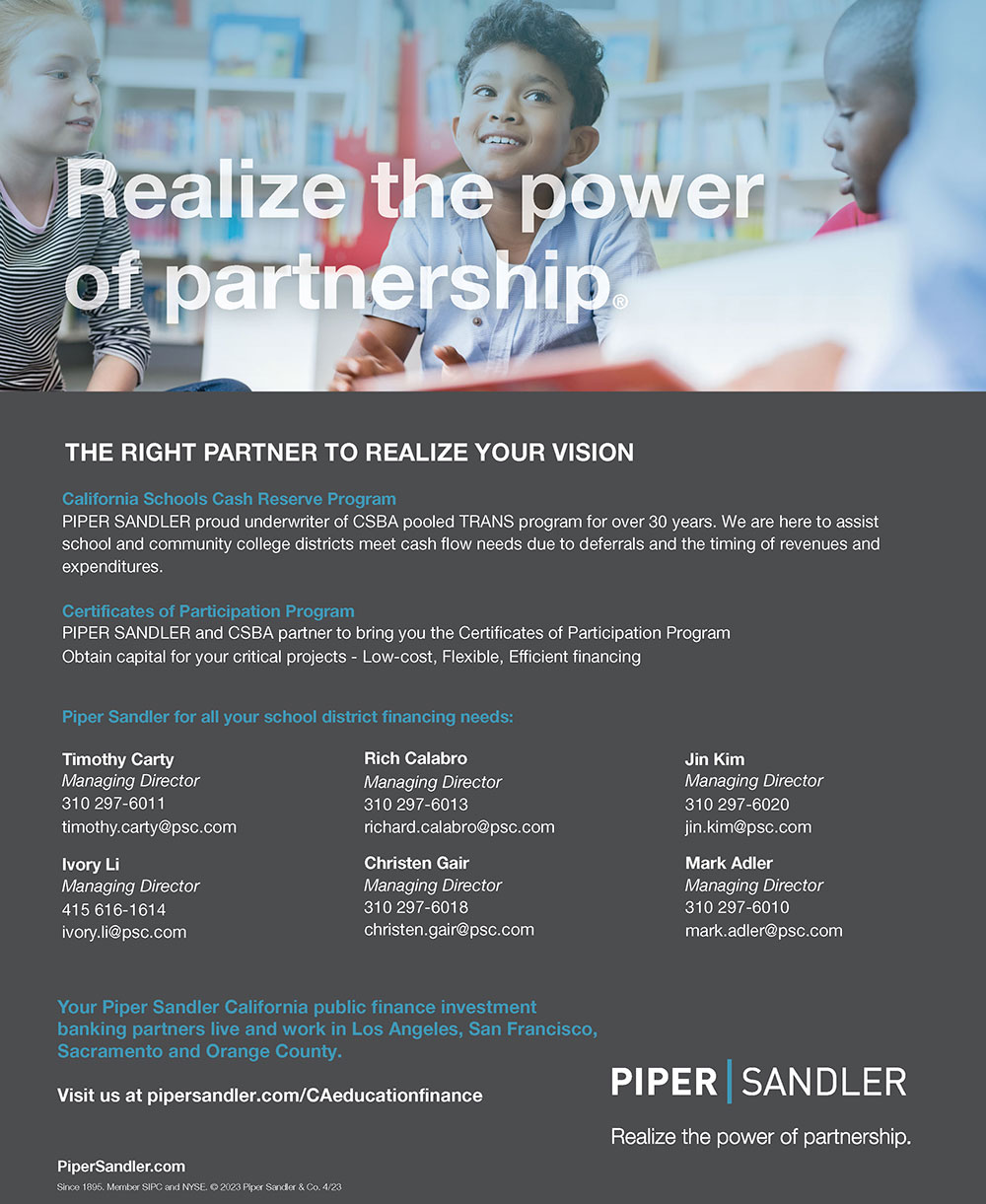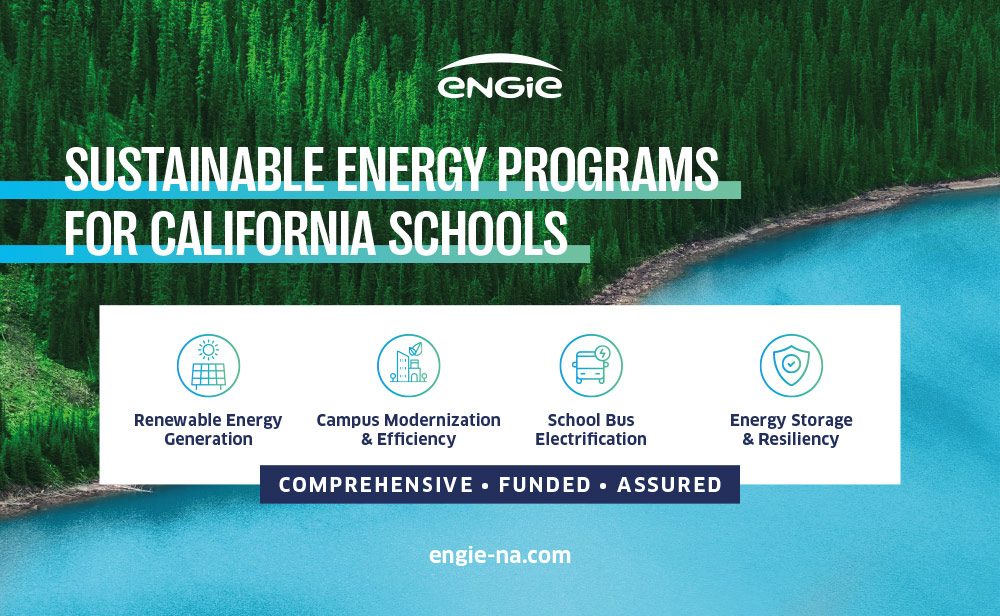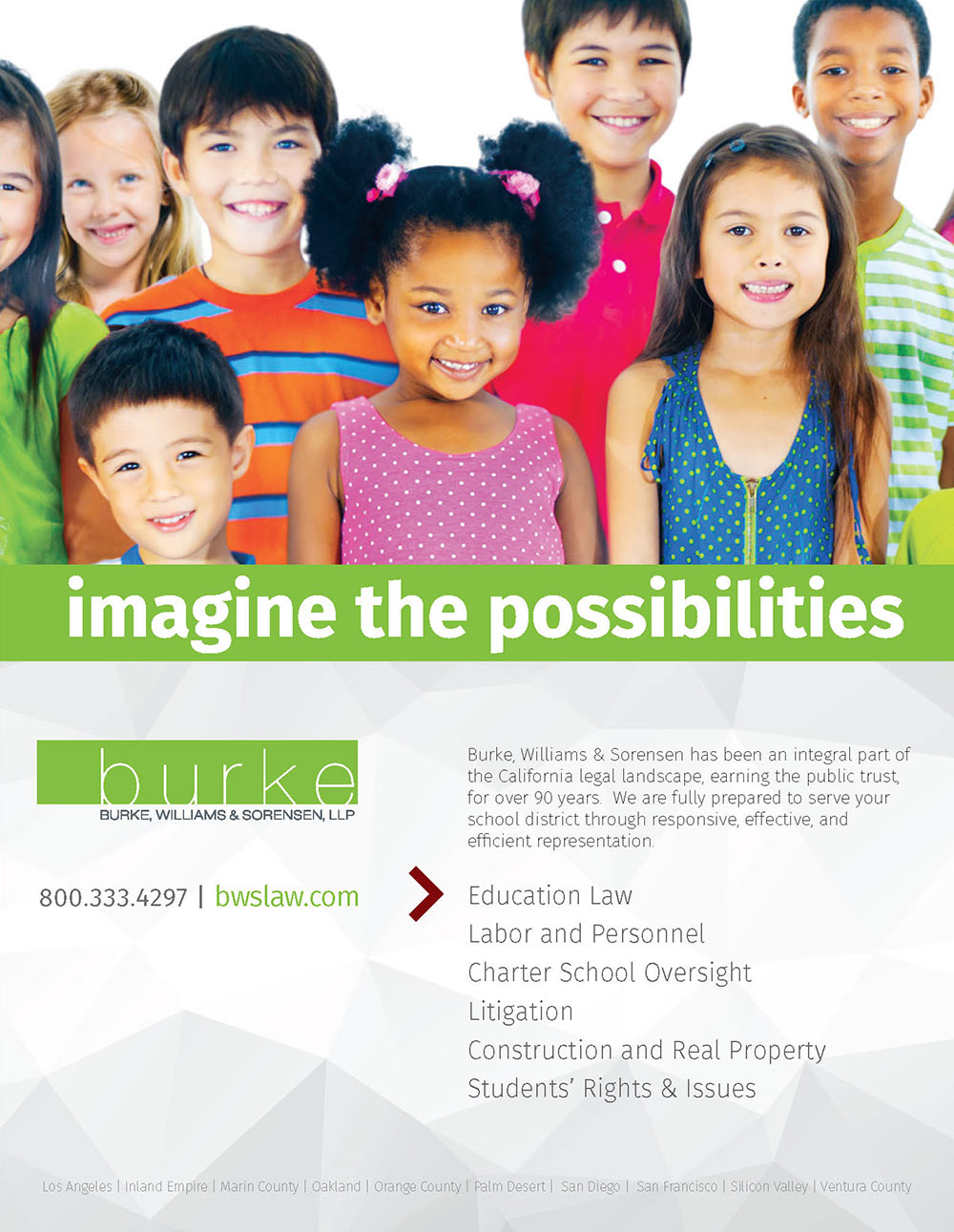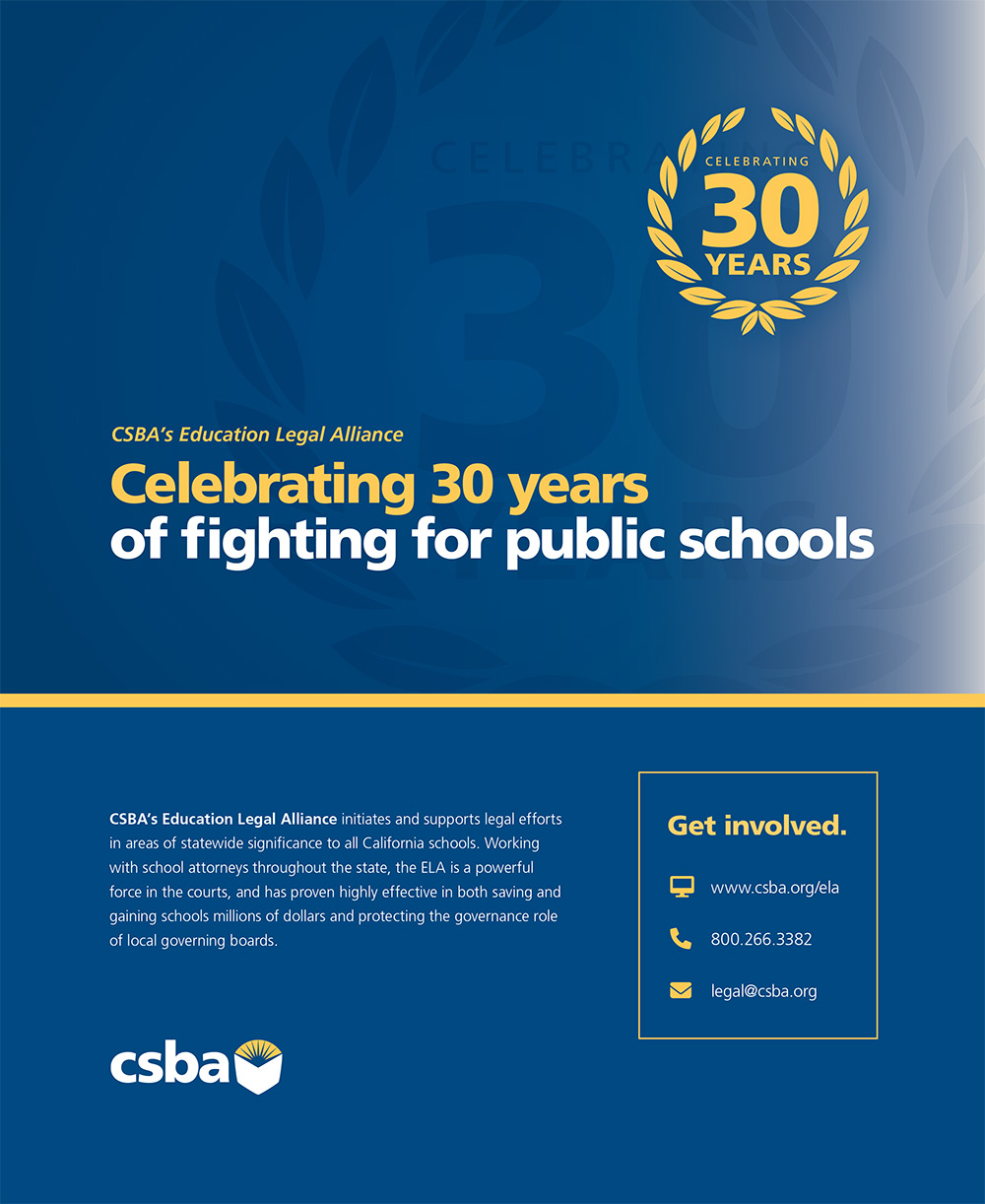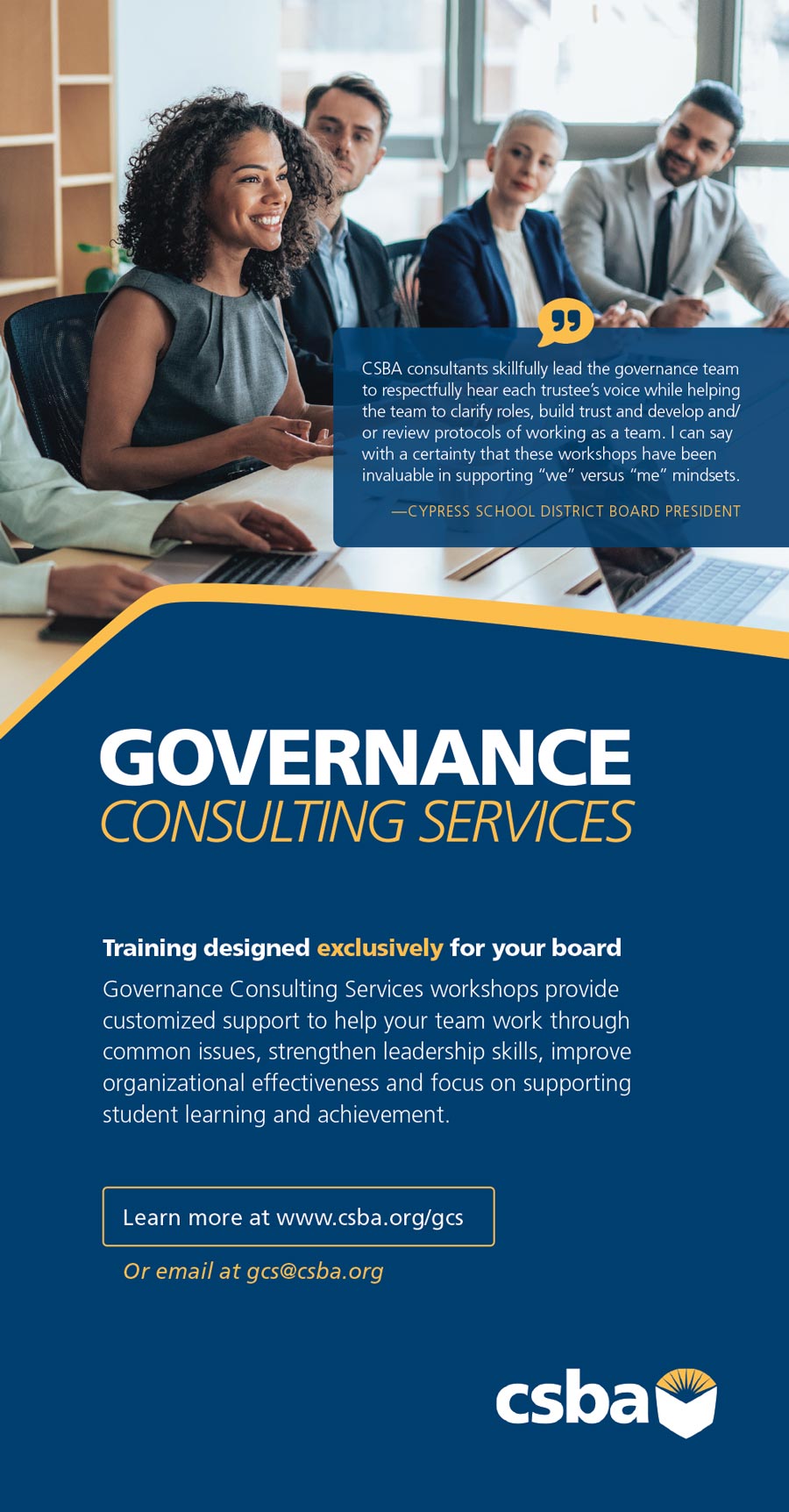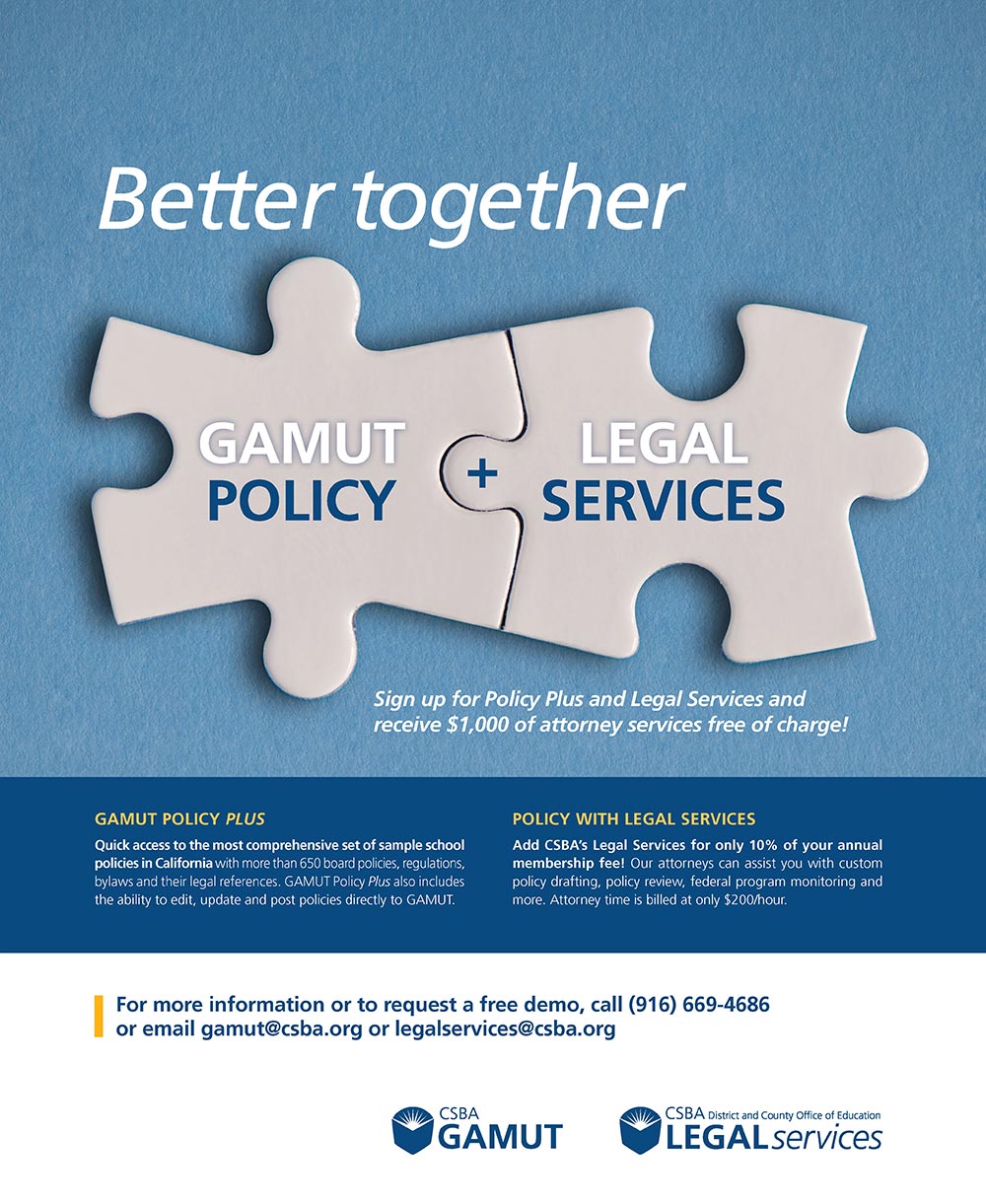

AI has arrived

Summer 2023
The California School Boards Association is the essential voice for public education. We inspire our members to be knowledgeable leaders, extraordinary governance practitioners and ardent advocates for all students.
Artificial intelligence technology is already infiltrating classrooms
by Heather Kemp
Inclusive classrooms require investment in supports and teacher training — and lead to gains for all
by Alisha Kirby
Funds can support new programs and arts integration while improving student outcomes
by Kimberly Sellery
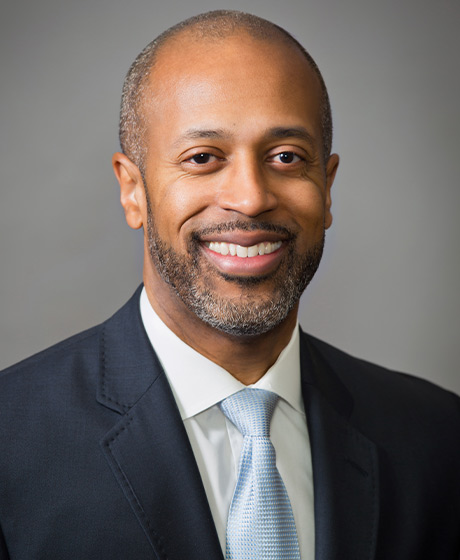
CEO’s note
n 1754, a Scottish teenager named James Watt departed his small hometown of Greenock for nearby Glasgow. Watt hoped to make a living fashioning scientific instruments and find a veteran tradesman to teach him the finer points of the craft. Fifteen years later, he received a patent for a massive innovation in steam engine technology, a development that is often credited with kickstarting the Industrial Revolution.

Frank Magarino
Region 1, Del Norte County USD
Sherry Crawford
Region 2, Siskiyou COE
David Gracia
Region 3, Napa Valley USD
Renee Nash
Region 4, Eureka Union SD
Alisa MacAvoy
Region 5, Redwood City ESD
Jackie Wong
Region 6, Washington USD
James Aguilar
Region 7, San Leandro USD
Christopher “Kit” Oase
Region 8, Ripon USD
Roger Snyder
Region 9, Scotts Valley USD
Kathy Spate
Region 10, Caruthers USD
Sabrena Rodriguez
Region 11, Ventura USD
William Farris
Region 12, Sierra Sands USD
Susan Henry
Region 15, Huntington Beach Union HSD
Karen Gray
Region 16, Silver Valley USD
Debra Schade
Region 17, Solano Beach SD
Bruce Dennis
Region 18, Riverside COE
Devon Conley
Region 20, Mountain View Whisman SD
Tanya Ortiz Franklin
Region 21, Los Angeles USD
Nancy Smith
Region 22, Palmdale SD
Helen Hall
Region 23, Walnut Valley USD
Jan Baird
Region 24, South Whittier ESD
Chris Clark
Director-at-Large African American,
Folsom-Cordova USD
Christina Cameron-Otero
Director-at-Large American Indian,
Needles USD
Sylvia Leong
Director-at-Large Asian/Pacific Islander,
Cupertino Union SD
Michael Teasdale
Director-at-Large County, Riverside COE
Joaquín Rivera
Director-at-Large Hispanic, Alameda COE
John McPherson
CCBE President, Monterey COE
Region 1, Del Norte County USD
Sherry Crawford
Region 2, Siskiyou COE
David Garcia
Region 3, Napa Valley USD
Renee Nash
Region 4, Eureka Union SD
Alisa MacAvoy
Region 5, Redwood City ESD
Jackie Wong
Region 6, Washington USD
James Aguilar
Region 7, San Leandro HSD
Christopher “Kit” Oase
Region 8, Ripon USD
Roger Snyder
Region 9, Scotts Valley USD
Kathy Spate
Region 10, Caruthers USD
Sabrena Rodriguez
Region 11, Ventura USD
William Farris
Region 12, Sierra Sands USD
Susan Henry
Region 15, Huntington Beach Union HSD
Karen Gray
Region 16, Silver Valley USD
Debra Schade
Region 17, Solano Beach SD
Bruce Dennis
Region 18, Riverside COE
Devon Conley
Region 20, Mountain View Whisman SD
Tanya Ortiz Franklin
Region 21, Los Angeles USD
Nancy Smith
Region 22, Palmdale SD
Helen Hall
Region 23, Walnut Valley USD
Jan Baird
Region 24, South Whittier ESD
Chris Clark
Director-at-Large African American
Folsom-Cordova USD
Christina Cameron-Otero
Director-at-Large American Indian
Needles USD
Sylvia Leong
Director-at-Large Asian/Pacific Islander,
Cupertino Union SD
Michael Teasdale
Director-at-Large County, Riverside COE
Joaquín Rivera
Director-at-Large Hispanic, Alameda COE
Gina Cuclis
CCBE President, Sonoma COE
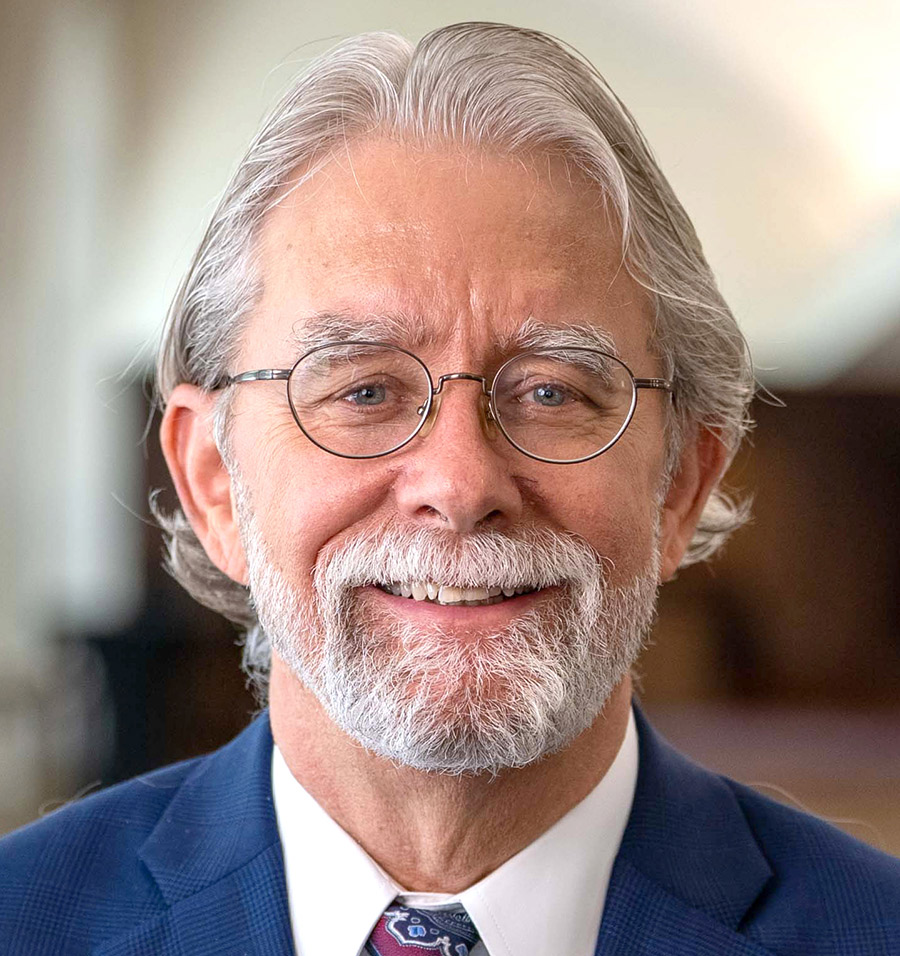
legal insights
Parental rights, the Supreme Court and California law
he subject of parental rights is making its way into school board meeting rooms, Congress and state legislatures, and federal and state courts. Parents are breaking new ground in schools as they make their voices heard on what students should read and are taught and what information about their children they should receive from school employees.

Chief Information Officer
Troy Flint, tflint@csba.org
Editorial Director
Kimberly Sellery, ksellery@csba.org
Staff Writers
Heather Kemp, hkemp@csba.org
Alisha Kirby, akirby@csba.org
Director of Graphic Design and Branding
Kerry Macklin, kmacklin@csba.org
Senior Graphic Designer
Amanda Moen, amoen@csba.org
Circulation and Advertising
csba@csba.org
Susan Markarian, Pacific Union ESD
President-elect
Albert Gonzalez, Santa Clara USD
Vice President
Dr. Bettye Lusk, Monterey Peninsula USD
Immediate Past President
Dr. Susan Heredia, Natomas USD
CEO & Executive Director
Vernon M. Billy
Articles submitted to California Schools are edited for style, content and space prior to publication. Views expressed are those of the authors and do not necessarily represent CSBA policies or positions. Articles may not be reproduced without written permission of the publisher. Endorsement by CSBA of products and services advertised in California Schools is not implied or expressed.

class act Best practices in action
Best practices in action

class act
Best practices in action


Each year, children in Ramona Elementary School get a taste of what it takes to develop and implement a policy that will benefit their peers and campus community. In doing so, district leaders say students begin to develop critical-reasoning skills, empathy for others and more as they rise to the occasion.
“We need to start as early as possible to listen to the community and listen to the children,” said Bellflower Unified School District Board President Renita Armstrong. “Let’s not limit the kids, let’s put it out there, give them that challenge.”
Established in 2019, the 2022 Golden Bell Award-winning civics education program seeks to prepare and engage students to be civically active and responsible members of society. Children are provided an opportunity to engage in a yearlong civic inquiry based on a compelling question that is investigated, researched and debated, culminating in a policy proposal to bring about positive change in the school or community.
It’s always been about the students. I have been a school board member for six and a half years. Before that, I served on my neighborhood school’s site council for 10 years. I ran for the seat because I feel that public education is a critical part of our democracy and that I could bring my professional, technological and military experience to a district with a long reputation for equity and academic excellence. A public official I talked to recently told me they consider school board members to be “Democracy’s first responders.” I never thought of it that way, but I think it fits.
You attended this year’s Coast2Coast Federal Advocacy Trip. Why was it important you went and what did you take away from your experience there?
It was important because it offered me a new vantage point. As school board members, we tend to see things from state and local perspectives. CSBA did an excellent job setting context, clarifying our collective position, defining our asks, providing tips for effective advocacy and coordinating meetings with our congressional representatives. However, the biggest takeaway was that we were preaching to the choir when talking to our representative. To succeed at the federal level, school board members must establish relationships with school board members in politically different districts to use our common ground to fight for public education for everyone — regardless of their political leanings.
What advice do you have for new and aspiring board members?
All new board members must learn their role on the larger governance team. Another piece of advice is to discover and define your specific area of expertise or value and lean into that. Additionally, I would recommend the new board member take CSBA’s Masters in Governance® as soon as they can. Then, after some real-world experience, retaking the specific modules could be beneficial. Layering and repetition are critical for mastery.
Sometimes, it’s all about showing up. I am inspired every time I see a parent work a double shift to put food on the table for their family and then show up at a game or a recital because they want to ensure their student knows they care. People who care enough about their children’s education to attend board and committee meetings to be a proactive part of the solution inspire me.
Who inspired you growing up?
While attending Newark Memorial High School, I had the privilege of being a part of the football and wrestling teams and witnessed firsthand what it feels like to have adults putting everything they have into the next generation. When he was alive, Coach Rich Swift inspired hundreds of student athletes on the benefits of hard work, the importance of teamwork and how critical it is for people to live purposefully. As a teacher and an athletic director, Coach Swift crystallized for me the role that public education plays in shaping the lives of “the whole person.”
What do you find most fulfilling about your work as a board member?
It comes to a head every year at graduation when the board is on the stage, the band strikes up “Pomp and Circumstance,” and the columns of students begin to trickle in. All of the late-night board meetings, LCAP discussions, committee meetings, advocacy trips, education conferences, campaign canvassing and political organizing just seem to melt away, and the result of all of the hard work is tangible and real, sitting right in front of you. Those young adults are the point of it all. I am not generally emotional, but that gets me every year, and it never gets old.
Would you like to participate in an upcoming Member Profile? Contact us at editor@csba.org.


It’s always been about the students. I have been a school board member for six and a half years. Before that, I served on my neighborhood school’s site council for 10 years. I ran for the seat because I feel that public education is a critical part of our democracy and that I could bring my professional, technological and military experience to a district with a long reputation for equity and academic excellence. A public official I talked to recently told me they consider school board members to be “Democracy’s first responders.” I never thought of it that way, but I think it fits.
You attended this year’s Coast2Coast Federal Advocacy Trip. Why was it important you went and what did you take away from your experience there?
It was important because it offered me a new vantage point. As school board members, we tend to see things from state and local perspectives. CSBA did an excellent job setting context, clarifying our collective position, defining our asks, providing tips for effective advocacy and coordinating meetings with our congressional representatives. However, the biggest takeaway was that we were preaching to the choir when talking to our representative. To succeed at the federal level, school board members must establish relationships with school board members in politically different districts to use our common ground to fight for public education for everyone — regardless of their political leanings.
What advice do you have for new and aspiring board members?
All new board members must learn their role on the larger governance team. Another piece of advice is to discover and define your specific area of expertise or value and lean into that. Additionally, I would recommend the new board member take CSBA’s Masters in Governance® as soon as they can. Then, after some real-world experience, retaking the specific modules could be beneficial. Layering and repetition are critical for mastery.
Who inspires you as an adult?
Sometimes, it’s all about showing up. I am inspired every time I see a parent work a double shift to put food on the table for their family and then show up at a game or a recital because they want to ensure their student knows they care. People who care enough about their children’s education to attend board and committee meetings to be a proactive part of the solution inspire me.
Who inspired you growing up?
While attending Newark Memorial High School, I had the privilege of being a part of the football and wrestling teams and witnessed firsthand what it feels like to have adults putting everything they have into the next generation. When he was alive, Coach Rich Swift inspired hundreds of student athletes on the benefits of hard work, the importance of teamwork and how critical it is for people to live purposefully. As a teacher and an athletic director, Coach Swift crystallized for me the role that public education plays in shaping the lives of “the whole person.”
What do you find most fulfilling about your work as a board member?
It comes to a head every year at graduation when the board is on the stage, the band strikes up “Pomp and Circumstance,” and the columns of students begin to trickle in. All of the late-night board meetings, LCAP discussions, committee meetings, advocacy trips, education conferences, campaign canvassing and political organizing just seem to melt away, and the result of all of the hard work is tangible and real, sitting right in front of you. Those young adults are the point of it all. I am not generally emotional, but that gets me every year, and it never gets old.
Would you like to participate in an upcoming Member Profile? Contact us at editor@csba.org.
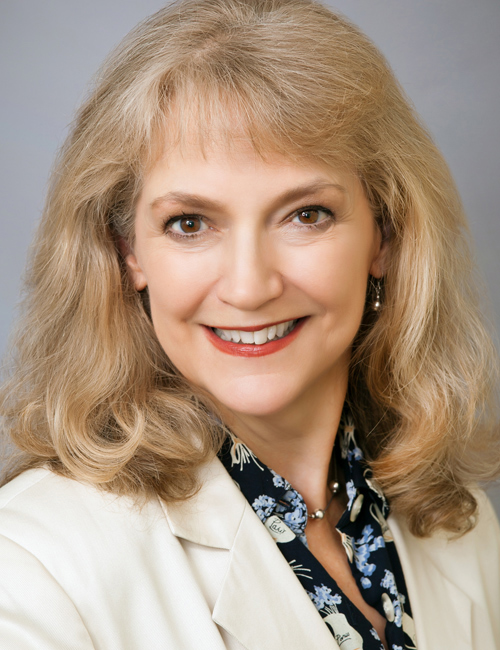
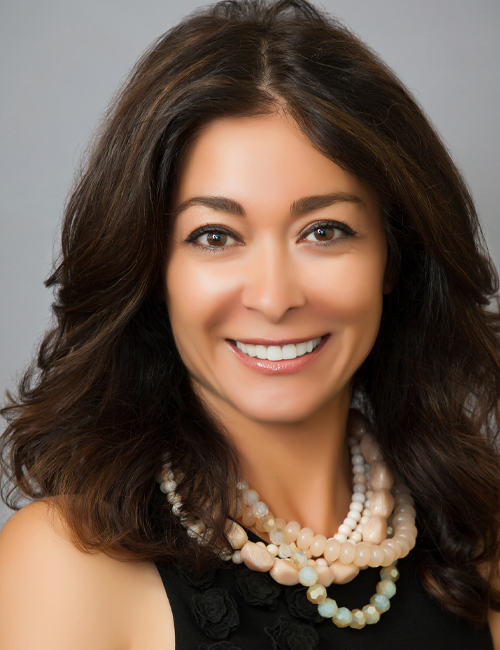

Boardwise is a forum for board members and superintendents across the state to share questions about governance and board–superintendent relations. Send your questions to boardwise@csba.org. Have governance team questions that require personal attention? Reach out to CSBA for a customized Governance Consulting Workshop with our experts at gcs@csba.org.
Monika: District bylaws do a respectable job of spelling out the board president’s responsibilities and duties. Bylaws alone, however, do not inform and aid board presidents in the key role of fostering, nurturing and collaborating to conduct the district’s business in a cohesive way. This approach is the hallmark of high-performing governance teams. Board presidents who routinely show mindfulness illustrate elevated levels of success in their role. They recognize they are the board’s presiding officer — not the board’s ruler or dictator.
Seasoned board presidents know their duties go beyond just calling meetings to order and ensuring the Brown Act is followed. “Being a board president takes skill to oversee an unruly crowd, it takes finesse to allow each board member time to speak, and it takes patience to keep the meeting going when emotions are high,” said Calaveras Unified School District Board President Sherri Reusche.
csba at issue
How today’s healthcare model for youth is changing
ince COVID-19 (and even before), more patients have been turning to hybrid healthcare to meet their needs. Hybrid healthcare combines telehealth’s remote benefits with in-person care’s hands-on aspects. It’s the way of the future — and facilities of all kinds, including school campuses, are jumping on the bandwagon.
As a society, we have moved toward something different, largely thanks to the safety parameters established during COVID-19. With an increased need for flexibility, hybrid services shot to center stage — and have stayed there. This is especially true when considering hybrid health and wellness services for children.
Here’s how healthcare for children is changing dramatically — and what we can expect from the future of hybrid healthcare in schools.
from the field
he California Interscholastic Federation’s (CIF) Federated Council voted unanimously on Feb. 3 to add girls’ flag football as a statewide sanctioned sport for the upcoming 2023–24 school year. CIF is the statewide body that governs high school athletics.
Flag football in particular has seen a boost in interest among young people in recreational leagues as well as burgeoning support from the NFL, with the Los Angeles Rams and Los Angeles Chargers running a pilot high school league for girls in Southern California. According to the Associated Press, the NFL is even advocating for flag football to be added to the 2028 Olympics in Los Angeles.
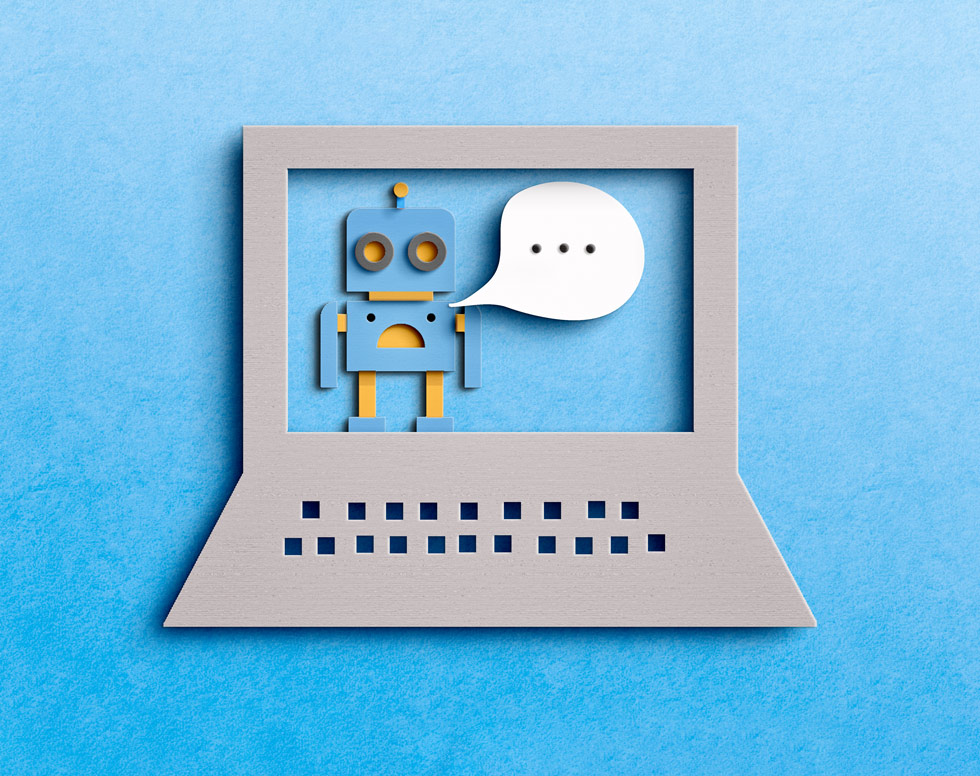
Arrived

Artificial intelligence technology is already infiltrating classrooms
By Heather Kemp
That is part of ChatGPT’s response to the question “Should K-12 schools embrace AI?”
arnings and testimonials about artificial intelligence (AI) have taken over newsfeeds since the tool, an AI large language model (LLM) created by OpenAI, launched its free preview for users to interact with and submit feedback in November 2022. ChatGPT is meant to hold human-like conversations and can complete tasks such as writing emails, essays and code in addition to responding to questions and other functions.
Its introduction has caused concern among some in education who believe it will assist students in cheating on assignments and further their dependency on technology, in addition to other issues.

Embracing students with disabilities
Inclusive classrooms require investment in supports and teacher training — and lead to gains for all
By Alisha Kirby
In California, 13 percent of all students received special ed services during that time period. That same year, more than 20,000 IDEA-related complaints were filed against schools throughout the country, less than half of which were resolved without a legal hearing. In California, special education-related disputes rose 85 percent from 2007 to 2017.
hile disputes may arise for myriad reasons, a common link in several recent cases is that families don’t feel their child is being included, and appropriately supported, in the general education setting with their peers.
Research has long shown the benefits of inclusion — both for special education and general education students — but putting inclusive practices into action can be challenging. Staffing shortages, teacher training issues and a severe lack of funding can all appear insurmountable to local educational agencies working to provide welcoming, rigorous and engaging inclusive learning opportunities for students with disabilities.

ith the overwhelming passage of Proposition 28, California voters threw their weight behind the importance of arts education in public schools. The Arts and Music in Schools Funding Guarantee and Accountability Act requires the state to establish a new, ongoing program supporting arts instruction in public schools beginning in 2023–24. The amount of funding available each fiscal year for the Arts and Music in Schools (AMS) program will be 1 percent of the TK-12 portion of the Proposition 98 Guarantee provided in the prior fiscal year. Gov. Gavin Newsom’s May Revision projected $933 million for the 2023–24 school year.
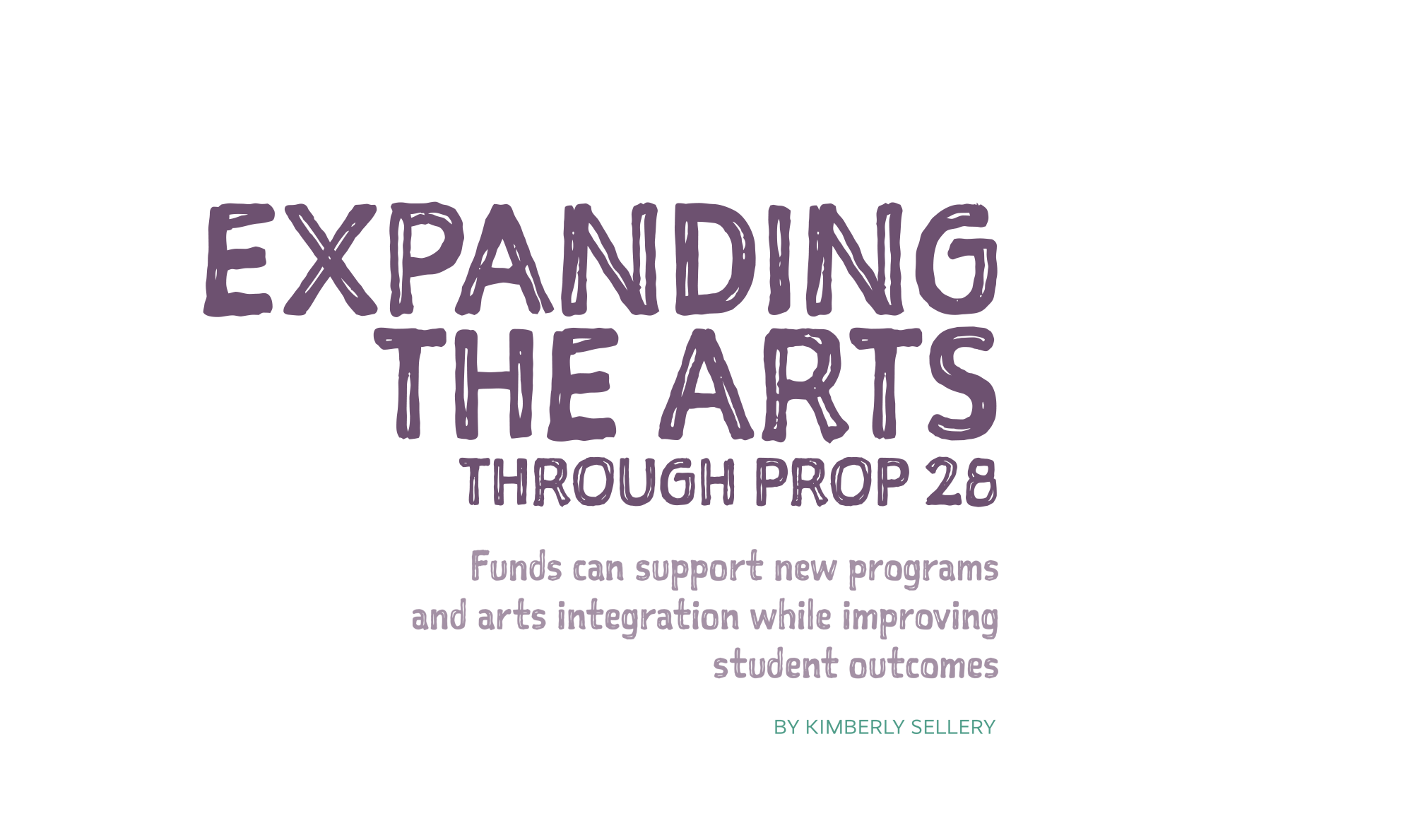
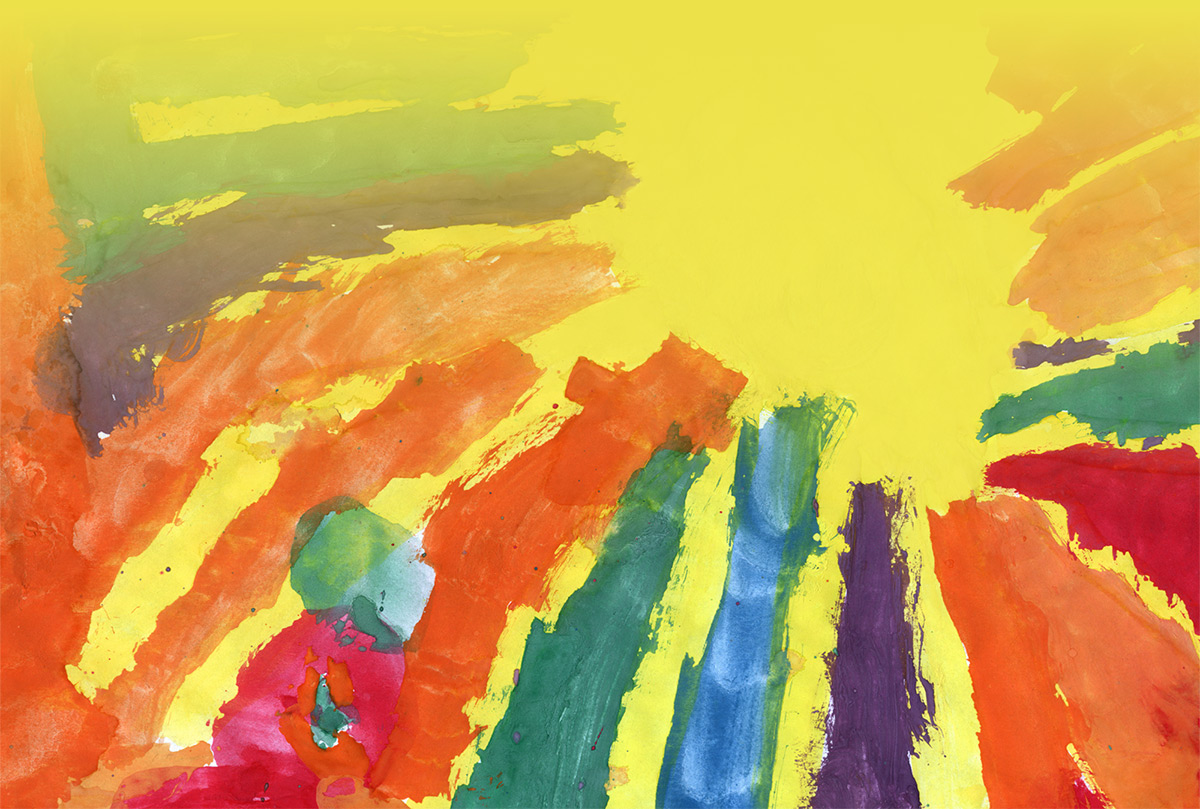
hile the California Department of Education is still working on specific guidelines at the time of this writing, the Legislative Analyst’s Office explained that Prop 28 funds will be distributed based on enrollment in preschool and K-12. Of the total amount, 70 percent will go to schools based on their share of statewide enrollment and the remaining 30 percent will go to schools based on their share of low-income students enrolled statewide. For some large districts, like San Diego Unified School District, this money equates to millions of dollars; while for small, rural local educational agencies like Cold Springs SD in Santa Barbara County, the funding won’t cover a teacher’s salary.


Under educator licensure, we provide licenses to California educators, which is anybody who might be in a school site. It’s not just teachers, but counselors, leaders, school psychologists, school nurses — it’s a range of education professionals that we license. We monitor these assignments. And a big part of our work is to investigate educator misconduct and take appropriate disciplinary action. This area of investigation and disciplinary action is one the public doesn’t see, nor should they, because it is a confidential manner, but I think it is one of the most important requirements and tasks of the commission to keep children and youth safe in our schools.



